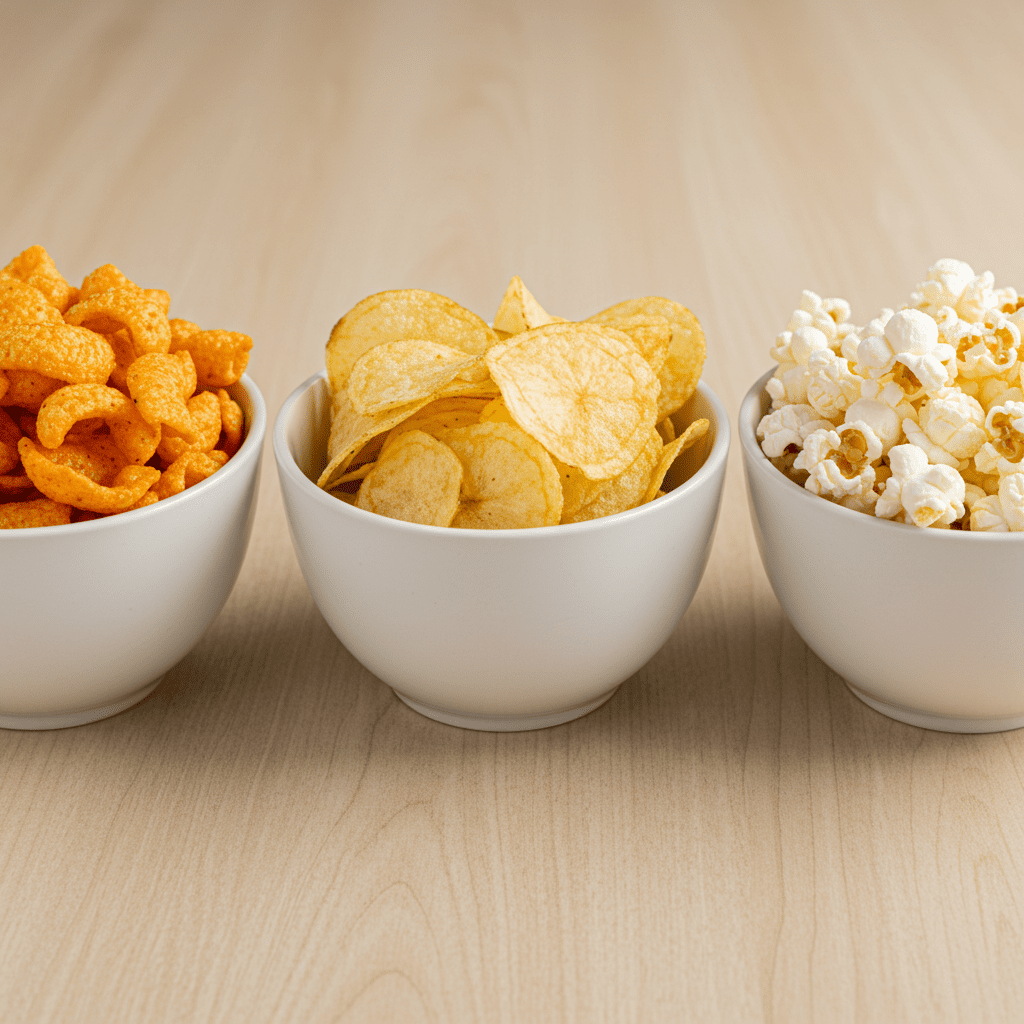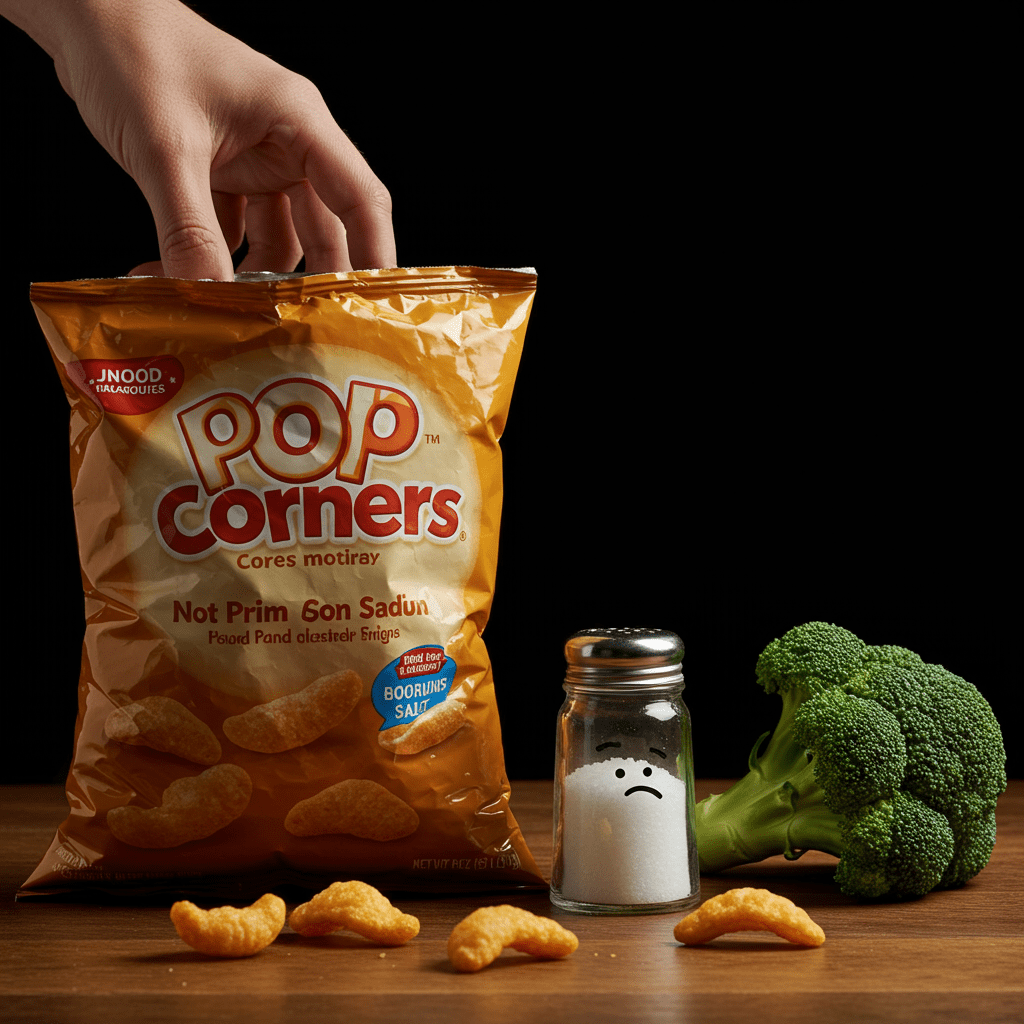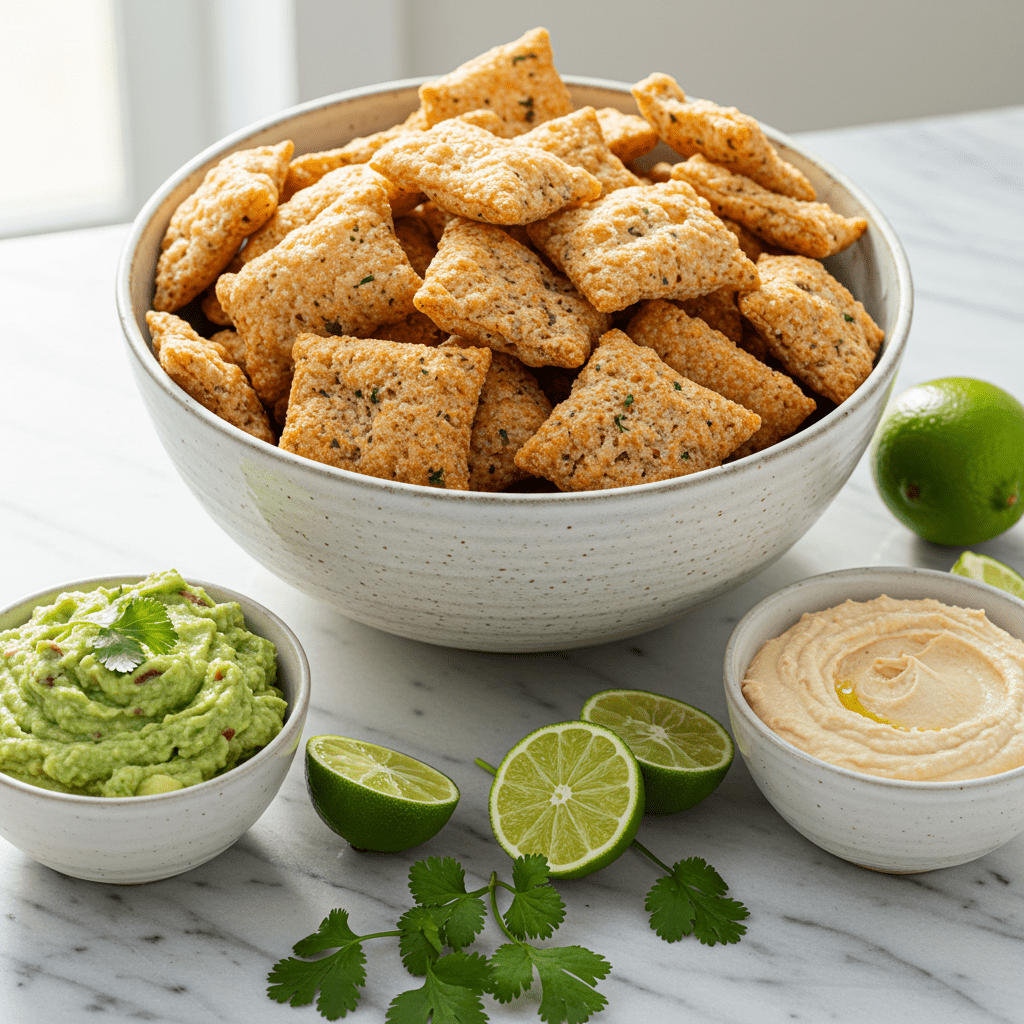Are PopCorners a Healthy Snack? A Dietitian’s Honest Review

Navigating the snack aisle can feel like a pop quiz you didn’t study for. With bright packaging and catchy health claims, it’s tough to know what’s genuinely good for you.
One snack that’s everywhere right now is PopCorners. They’re light, crunchy, and marketed as a smarter choice than traditional chips.
But are they actually healthy? As a registered dietitian, I believe that enjoying your food is just as important as nourishing your body.
My goal is to help you make informed choices that feel good and taste great. Today, we’re putting PopCorners under the microscope to see if they live up to the hype and deserve a regular spot in your pantry.
We’ll examine the ingredients, compare them to other snacks, and talk about how to make them part of a truly satisfying and balanced snack time.
- What Exactly Are PopCorners Anyway?
- A Dietitian’s Look at the Nutrition Label
- How Do PopCorners Stack Up Against Other Snacks?
- What Are the Real Health Benefits?
- Are There Any Downsides to Consider?
- So, Can They Help With Weight Loss?
- How to Build a Smarter Snack with PopCorners
- A Dietitian’s Final Verdict
- Conclusion
What Exactly Are PopCorners Anyway?

Before we dive into the nutrition label, let’s clarify what PopCorners are. Unlike potato chips, which are sliced from potatoes and fried, or tortilla chips, which are made from corn masa and fried, PopCorners are created using a unique process.
They’re made from corn and cooked with heat and pressure, which makes them pop—hence the name. The result is a light, crispy snack that has a texture somewhere between a chip and popcorn.
Because they are never fried, they’re often positioned as a healthier alternative in the snack world.
A Dietitian’s Look at the Nutrition Label

The front of the bag highlights ‘Never Fried’ and ‘No Artificial Anything,’ which sounds promising. But as a dietitian, I always turn the bag over to look at the details.
Let’s break down the nutrition for a one-ounce (about 28g) serving of the Sea Salt flavor, which is roughly 20 crisps:
- Calories: 120
- Total Fat: 2.5g
- Sodium: 190mg (8% of your Daily Value)
- Total Carbohydrates: 23g
- Dietary Fiber: 0g
- Total Sugars: 0g
- Protein: 2g
The ingredient list for this flavor is impressively simple: Yellow Corn, Sunflower Oil, and Sea Salt.
While low in calories and fat, the most striking detail here is the complete lack of fiber and minimal protein. We’ll explore why that’s so important in a bit.
How Do PopCorners Stack Up Against Other Snacks?

Context is everything in nutrition. To understand if PopCorners are a ‘good’ choice, we need to see how they compare to their neighbors in the snack aisle.
Versus Potato Chips: A similar serving of Lay’s Classic Potato Chips has around 160 calories and 10 grams of fat. PopCorners are significantly lower in both fat and calories, primarily because they are air-popped instead of deep-fried. The American Heart Association notes that consuming too many fried foods can contribute to negative health outcomes, making PopCorners a potentially smarter swap if you’re craving something crunchy.
Versus Popcorn: A serving of air-popped popcorn contains about 3-4 grams of fiber. This is where PopCorners fall short. The processing required to make them into a chip strips away the fiber, a key nutrient for digestive health and feeling full. Research from the Harvard T.H. Chan School of Public Health emphasizes fiber’s role in maintaining stable blood sugar and promoting satiety.
Versus Tortilla Chips: Traditional tortilla chips are also typically fried and have more fat. PopCorners offer a similar shape and crunch for dipping but with a lighter nutritional profile, making them a good substitute for pairing with salsa, guacamole, or even as a base for loaded ground turkey nachos.
What Are the Real Health Benefits?

PopCorners do have several points in their favor, which contribute to their popularity.
- Lower in Fat and Calories: Their ‘never fried’ method is a legitimate advantage over many conventional chips, making them a lighter option that can more easily fit into a calorie-conscious diet.
- Simple, Recognizable Ingredients: For basic flavors like Sea Salt, the ingredient list is short and easy to understand. They are also Non-GMO Project Verified and don’t contain artificial preservatives or flavors, which appeals to many health-aware consumers.
- Some Allergy-Friendly Choices: Many flavors, including Sea Salt, Kettle Corn, and Spicy Queso, are certified gluten-free, making them a safe and accessible option for individuals with celiac disease or gluten sensitivity. Always be sure to check the packaging, as some flavors do contain dairy or gluten.
Are There Any Downsides to Consider?

No snack is perfect, and it’s important to look at the full picture. Here are a few potential drawbacks of PopCorners:
- Very Low in Fiber and Protein: This is their biggest nutritional weakness. Fiber and protein are the two nutrients that help you feel full and satisfied after eating. Without them, a snack is mostly just quick-digesting carbohydrates, which can lead to blood sugar spikes and leave you feeling hungry again shortly after.
- Can Be Easy to Overeat: Because they are light and not very filling, it’s easy to eat more than one serving without realizing it. A groundbreaking 2019 study from the National Institutes of Health (NIH) found that people consumed significantly more calories and gained more weight on a diet high in ultra-processed foods compared to a minimally processed diet.
- Sodium Content Varies: While the Sea Salt flavor is moderate in sodium, flavored versions like Spicy Queso or White Cheddar can be significantly higher. It’s wise to be mindful of your portion size, especially if you are monitoring your sodium intake.
So, Can They Help With Weight Loss?

This is a question I hear a lot about ‘healthier’ snacks. The answer is nuanced.
Because PopCorners are lower in calories than many other chips, swapping them for a higher-calorie option could contribute to a calorie deficit, which is necessary for weight loss. A single serving of 120 calories can certainly fit into a weight management plan.
However, their low fiber and protein content works against you. They won’t keep you full for long, which might lead you to seek out another snack sooner.
For sustainable weight loss, the goal is to choose foods that maximize satiety. So, while PopCorners aren’t ‘bad’ for weight loss, they aren’t the most effective tool for managing hunger on their own.
The key, as we’ll see next, is what you eat with them.
How to Build a Smarter Snack with PopCorners

This is where we turn a simple snack into a powerful, balanced one. Instead of eating PopCorners straight from the bag, think of them as a vehicle for other nutrient-dense foods.
My go-to strategy is to add sources of Protein, Healthy Fat, and Fiber (PFF). Here are a few balanced snack ideas:
- With Guacamole: Mash up half an avocado with lime juice and cilantro. The healthy fats and fiber from the avocado will make the snack incredibly satisfying.
- With Greek Yogurt Dip: Mix plain Greek yogurt with ranch seasoning for a high-protein dip that turns PopCorners into a much more filling treat. For another high-protein option, try this creamy queso dip with a secret healthy ingredient.
- With Hummus and Veggies: Serve a portion of PopCorners alongside a scoop of hummus (protein and fiber) and some crunchy cucumber or bell pepper slices (more fiber and nutrients).
- As a ‘Snack Plate’: Create a mini-meal with a handful of PopCorners, a hard-boiled egg or a cheese stick for protein, and a handful of berries for fiber and antioxidants.
This approach turns a simple carb snack into a well-rounded and energizing mini-meal.
A Dietitian’s Final Verdict

So, are PopCorners healthy? They are a healthier alternative to many traditional fried chips. They are lower in fat and calories, have simple ingredients, and can be a satisfyingly crunchy snack.
However, they are not a ‘health food’ on their own. Their lack of fiber and protein means they don’t offer much in the way of lasting energy or fullness.
From my perspective as a dietitian, PopCorners are a great ‘sometimes’ snack and an excellent base for building something more nutritious. The key is awareness. Enjoy them for their crunch and flavor, but be mindful of portion sizes and, whenever possible, pair them with other whole foods to create a more balanced and satisfying snack that truly nourishes your body.
Conclusion
In the end, the question isn’t whether PopCorners are ‘healthy’ in a vacuum, but how they fit into your overall diet. They offer a lighter, less-processed crunch than many chips on the market, making them a solid choice when you want something salty and satisfying.
By pairing them with protein- and fiber-rich foods like hummus, avocado, or Greek yogurt, you can easily elevate them from a simple snack to a well-rounded mini-meal. Remember, the goal of healthy eating isn’t perfection; it’s balance.
Making informed choices, listening to your body, and most importantly, enjoying your food are the keys to a sustainable and happy relationship with eating. So go ahead and enjoy your PopCorners, and get creative with how you serve them!
